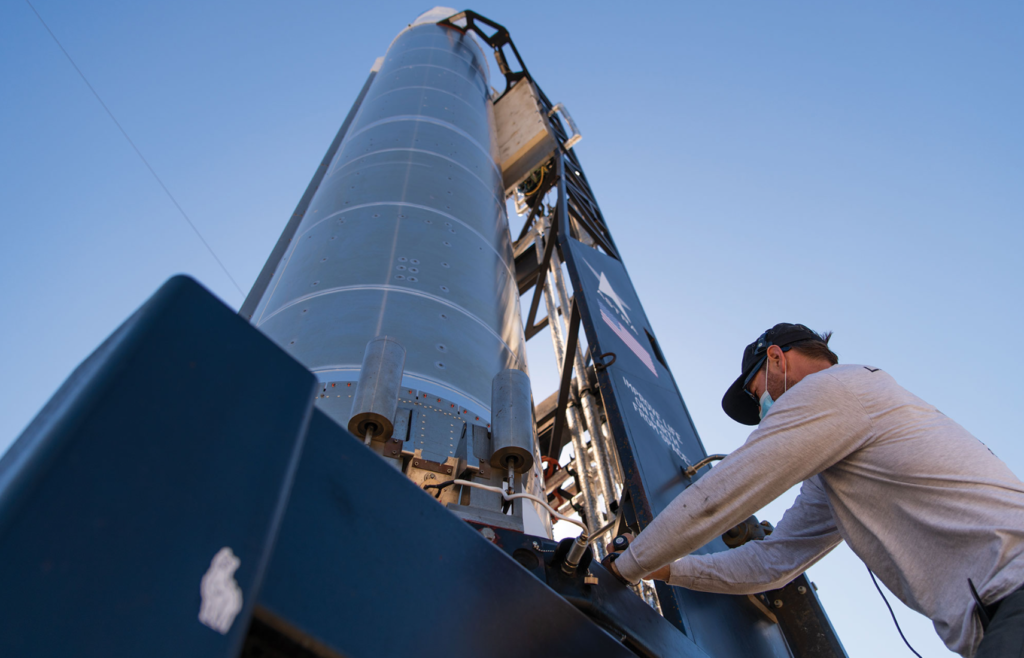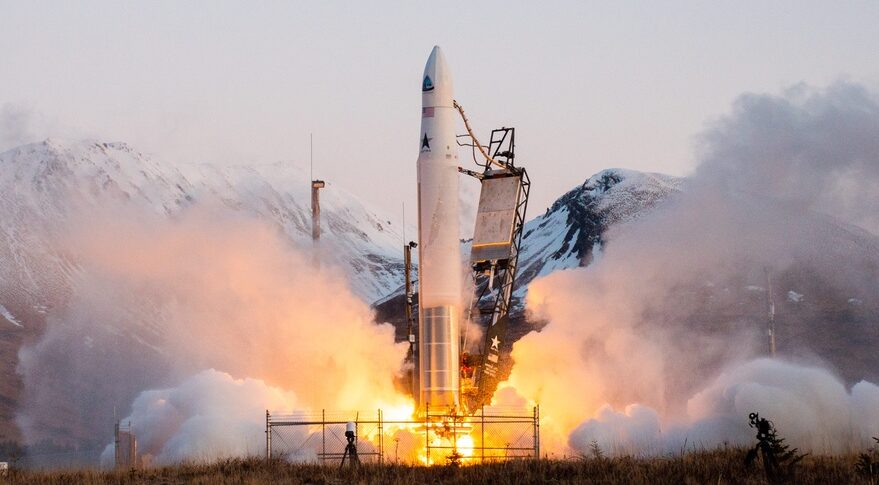
Astra Has Very Ambitious Plans For The Future
As you can imagine, starting and working on a rocket company is an extremely ambitious and risky endeavor. For many companies, in order to be successful, they must be capable of consistently reaching orbit with their own launch vehicle. This however is much easier said than done. In reality, reaching orbit for the first time is immensely difficult and costs quite a bit of time and money.
This being said, Astra recently managed to do it for the first time ever. This marked an invaluable milestone for the company that joined a long list of other accomplishments throughout the year. Just a few days ago Astra released a public letter to its shareholders that highlights some of the great progress the company has made and the even more ambitious plans they have for the future.
Looking at the grand scheme of things, very few companies and even agencies around the world have successfully reached orbit. This helps put in perspective the achievement it really is. Companies like Astra had to learn from multiple failed attempts and continue progressing over the past few years. Here I will go more in-depth into Astra’s impressive year, what they have planned for the future, and more.
Future Plans

Only a few days ago Astra released a letter highlighting the company’s success, plans, and thanks to everyone involved. Specifically, on April 28th, Astra tweeted saying, “Today we published a letter to our shareholders – learn about what we’ve achieved this year, our long-term focus and the future of space tech.” This letter consist of multiple pages highlighting a bunch of different aspects of the company. However, it goes in-depth on the future of Astra and what to expect. They begin highlighting the overall strategy of the company and then proceed to look at how they plan to get there.
They point out that with such an expansive opportunity before them, they need consistent focus and execution to earn the right to grow into the company they aspire to be. They are building a foundational foothold in an established, but lucrative portion of the ecosystem — launch services — that, over time, will become a strategic advantage as Astra’s long-term vision unfolds. Astra’s mission of improving life on Earth from space and the vision for a healthier and more connected planet are the foundation of Astra’s strategy, which has three phases. They mention that, “When we took Astra public last summer, Adam and I shared our long-term vision for a frequent, low-cost launch system that would allow us to develop, deploy, and maintain a space services platform that would enable our customers to focus on building space applications instead of space infrastructure. We shared a vision of a “cloud constellation” composed of spacecraft that our customers can leverage like technology companies leverage cloud computing, providing network and computing services on demand, with plugand-play hardware peripherals that could be plugged into satellites just before a launch. We believe that this is the future of Spacetech, and frequent access to space is the critical first step to enabling this future, making it Phase 1 of our strategy.” With hundreds of small satellite constellations in development, and over a dozen companies that have gone public, collectively raising over $20 billion in the past year, they see launch as the critical enabler of not only Astra’s long-term plans, but the key enabler of these new Spacetech companies.
As partially mentioned prior, the future plan consists of three main phases. Phase 1 is launch services. Today in Phase 1, Astra is primarily focused on dramatically increasing access to space, because you can’t build a space platform that will improve life on Earth from space if you can’t get to space. While rocket science may be notoriously complicated, economies of scale apply like any other industry. In other words, if you produce something at higher and higher volumes, regardless of how complex it is, it is easier to reduce the per-unit cost. To get more to space economically, you can either scale up your rocket (and make a really big rocket), or design a rocket that is easy and inexpensive to produce, and scale out your factory to make many smaller rockets. While large reusable rockets are ideal for transporting people and large cargo to space, Astra has found thanks to customers that the flexibility of getting to the right place in space as quickly as possible, at the lowest possible per-launch cost is what is important to them. This is why Astra has chosen to scale out its factory instead of scale up its rocket. They believe a thriving space economy requires both high volume small launch and human-rated large launch, and that the lowest cost leaders in each of these categories will be winners.
You then have Phase 2, which focuses on space technology. Specifically, in this second phase, Astra is focused on productizing core space technologies. They first point out that paying $50,000 to $100,000 for a single space-qualified part that fits in the palm of your hand that would cost less than $500 if it was a consumer product is painful, particularly if you need four of them for a satellite. Having to wait 9 months to get these parts made to order makes rapid iteration impossible, and then having the items arrive six months late adds insult to injury. This is expected because few of these components are standard and most are essentially handmade by skilled craftspersons, followed by numerous tests and paperwork before delivery. Like rockets, core space technologies are not at scale today, but need to be. Therefore, in Phase 2, Astra plans to develop the most critical core space technologies, including electric propulsion and solar power, that will be incorporated into the company’s newer rockets, satellites and other space infrastructure to ultimately deliver space services. Astra is confident that success in Phase 2 will require rapid iteration of hardware in space, and thus will be enabled by both its on-Earth facilities and the captive, frequent access to space that its scaling launch service provides. Astra will leverage this capability to productize the core technologies that they develop, license, or acquire, and test and qualify these products in space. Like Tesla selling batteries to other automakers, Astra believes that productizing core technologies (such as spacecraft engines) and selling them to different customers (and even competitors) will drive scale and increase the profitability and total value of the space economy powered by the Astra platform.
The final phase is 3, described as space services. In this phase, Astra plans to vertically integrate its core space technologies into satellites that will form an Astra constellation. They are laying the foundation for its space platform by securing licenses for spectrum, developing core space technologies, and securing anchor customers for Astra services. Astra’s strategy is to allow its customers to deploy software on a single mega-constellation that is being constantly refreshed with new technology.
A Year’s Accomplishments

Astra finishes the letter by highlighting some of the achievements the company has made over the past year. They point out the company focused on delivering to its customers. In 2021, Astra secured contracts with a diverse range of commercial and government customers, including NASA, the U.S. Space Force, Planet, Spaceflight, and Spire Global, Inc. As of the end of 2021, the company has over 50 launches under contract, and a $160 million backlog, demonstrating the value of its services and the trust its customers place in them. So far this year, Astra is continuing to accelerate momentum to meet its customers’ needs. In January, NASA awarded Astra the Venture-Class Acquisition of Dedicated and Rideshare contract for future task orders, which have not yet been issued to Astra. As task orders are awarded, this represents a $300 million opportunity over the next five years. In February, they conducted our first launch out of Cape Canaveral, our second spaceport, under the very first Federal Aviation Administration (“FAA”) Part 450 license in history. And in March, they conducted their first successful orbital mission for its customer Spaceflight, Inc., delivering 22 payloads to their required orbit. These are only some of the many accomplishments that Astra has made in the last year alone. Running and operating a rocket company is an immensely difficult task. However, through many difficulties and failures, Astra has continued working and will likely soon become a very significant company within the space industry.
Conclusion
Over the past few years, we have watched many different companies within the space industry. Some have been unsuccessful and continue to try while others have met that milestone. Astra for example recently successfully reached orbit and deployed payloads for the first time. However, this is only one achievement of many the company has made in the last year. Astra has very ambitious plans for the future including a three phase approach. We will have to wait and see how it progresses and the impact it has on the space industry.
